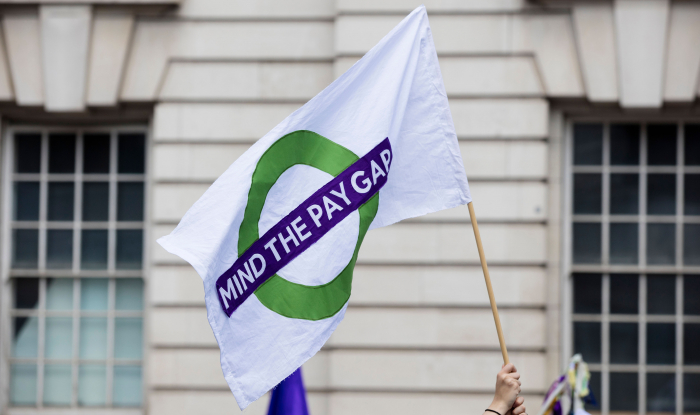Disability pay gaps

The UK disability pay gap currently stands at 13.8%, according to the latest official figures. The ONS’ analysis of average earnings shows that in 2021 disabled workers earned a median of £12.10 an hour, compared to £14.03 an hour for non-disabled workers, resulting in a pay gap of 13.8%. The figure for 2021 was slightly higher than the figure for 2020, although the trend is broadly flat with the median pay gap having risen from 12.5% to 14.1% between 2018 and 2019.
Official disability pay gap figures for 2022 are yet to be released but separate analysis by the TUC indicates the gap has widened, although the TUC urges some caution with this interpretation due to issues with pay data during the pandemic . The TUC’s analysis shows the pay gap between median hourly pay for disabled and non-disabled workers is now 17.2%.
Disability pay gap reporting currently voluntary
The Equality Act 2010 (Gender Pay Gap Information) Regulations 2017 do not require employers to publish figures on their disability pay gap, although a number of employers voluntarily calculate this as part of their annual figures or equal pay audits. For example, Network Rail’s latest (2022) disability pay gap report shows a median disability pay gap of 2.6%, meanwhile Scope – a leading charity championing equality for disabled people – has a disability pay gap of -5.0% in favour of disabled workers. The Government is currently analysing responses to a consultation held in early 2022 to gauge views on workforce reporting on disability for larger employers (those with 250 or more staff, as for gender pay gap reporting), with a view to improving data and transparency on disability in the workforce.
One of the main challenges to disability pay reporting is a lack of data on disability among employees. Employees are not legally obliged to disclose a disability, and the decision is a personal one. There however advantages in doing so, since employers are legally required to make reasonable adjustments for disabled people.
Join us on Wednesday, May 24 for a free thought-provoking seminar on the Gender Pay Gap. The event will take place at virtually via Microsoft teams from 10.00 am- 11.30am (approximately) and is open to everyone interested in learning more about this important topic.
During this event, we will explore the Gender Pay Gap and its implications for women in the workforce. You will hear from our gender pay gap expert Louisa Withers who will share her experiences and insights on the issue. We will also have an interactive discussion where delegates can ask questions and share their own perspectives on the Gender Pay Gap.
Please use the book seminar button to claim your free place.

Public Health Wales gender pay gap narrows to 11.8% in 2022 - Case study
April 2023

Public Health Wales, the body responsible for protecting and improving health and wellbeing in Wales, has successfully narrowed its gender pay gap from 22.6% in 2017 (when the pay gap reporting regulations came into effect) to 11.8% in 2022.
According to analysis we conducted for Public Health Wales, the difference between male and female employees’ pay narrowed significantly in 2022. The overall gender pay gap based on average earnings for men and women fell by 4.3 percentage points since 2021 to stand at 11.8% in 2022. The average pay gap is calculated by taking all rates of pay for men and women, which includes both the lowest-paid and crucially also the highest-paid, and dividing the sum of these by the total number of male and female employees. Basing analysis on average earnings in this way, rather than focusing on the median, usually produces a larger pay gap since underrepresented of women in higher-paying roles has the effect of lowering average pay for women.
The gap between median pay for male and female employees is smaller, since the median is less affected by outliers. At Public Health Wales the median pay gap also narrowed in 2022, falling from 8.5% in 2021 to 5.5% in 2022.
In many ways this narrowing of the gender pay gap in 2022 represents a continuation of an existing trend, which came about as a result of the various proactive efforts the organisation has been making to close the pay gap. These include advertising all job vacancies as being open to job sharers and part-time workers as standard; providing flexible working arrangements; and monitoring recruitment and selection processes, among other initiatives. All of these are felt to have had a positive impact.
Public Health Wales has a detailed understanding of its current gender pay gaps, having commissioned IDR to undertake an equal pay audit in Summer 2022. The organisation has been reporting its figures under the gender pay gap regulations but sought support from us to better understand the specific causes of pay gaps and also to obtain recommendations for narrowing these gaps, improving equality in the workplace and ensuring fair pay.
Our audit for Public Health Wales examined gender pay gaps by grade, department, length of service and age, and also explored how gender pay gaps interact and intersect with pay gaps for other protected characteristics under the Equality Act, including disability, ethnicity, religious status and sexual orientation.
Government publishes new guidance on ethnicity pay gap reporting
April 2023

Nearly four years after consulting on the topic, the Government has finally published guidance on ethnicity pay gap reporting, albeit on a voluntary basis. In addition to making gender pay gap reporting compulsory from April 2017 (for employers of 250 or more people), the Government had also originally intended to mandate ethnicity pay gap reporting. Its consultation, conducted in the winter of 2018/19, attracted 321 responses; however, further progress subsequently stalled: the Government’s response to the consultation has yet to be published and any formal commitments in this regard were absent from the Conservatives’ 2019 election manifesto.
Nonetheless, a push for mandatory ethnicity pay gap reporting persisted, receiving further support from the Women and Equalities Committee in February 2022. The Committee heard evidence from representative bodies including Business in the Community, the CIPD and the TUC, who suggested that concerns around employees’ potential unwillingness to disclose ethnicity data might be addressed by businesses communicating why they need this information and what they will use it for. The TUC also claimed that the current arrangement of voluntary reporting was unfair to business as it ‘just undercuts good employers who want to do this stuff, especially if there are costs to it, in our highly competitive market.’ (Employers that have voluntarily published their ethnicity pay gaps figures in recent years include Network Rail, the British Heart Foundation, Barnardos, PwC UK and Sainsbury's.)
Despite the Committee’s recommendation, the Government stopped short of mandating ethnicity pay gap reporting, regarding it as ‘just one type of tool to assist employers in creating a fairer workplace.’ It was also cautious about imposing new reporting burdens on businesses as they recover from the pandemic. Instead, last month saw the publication of government guidance intended to ‘give employers the tools to understand and tackle pay gaps within their organisations and build trust with employees’, as well as promoting greater consistency in reporting, on a voluntary basis. While it may have its origins in the proposals first mooted in the 2017 election manifesto, the publication of this guidance was prompted primarily by a recommendation from the Commission on Race and Ethnic Disparities, chaired by Dr Tony Sewell, as part of a wider-ranging exercise looking at the drivers of racial disparities across British society. The Sewell report did not recommend introducing legislation on ethnicity pay gap reporting, partly on the basis of what the report argues is the problem of unreliable sample sizes, but it did recommend that the Government support employers that choose to publish their pay gaps by producing guidance in this area.
The guidance explains how employers can report on their ethnicity pay gaps and in particular how to: collect employees’ ethnicity data; gather the required payroll data for ethnicity pay calculations; make ethnicity pay calculations; analyse and understand the results of these calculations; and develop an employer action plan to address any identified disparities. As part of this, it suggests possible reasons (both internal and external) why an ethnic group might be underrepresented in an organisation and encourages employers to consider how they might mitigate the impact of this.
The methodology outlined in the guidance seeks to mirror the approach set out for gender pay gap reporting wherever possible, with a view to minimising the need for employers to follow separate processes for collecting pay data. However, it also highlights the complexity of ethnicity pay reporting relative to gender pay reporting, involving as it does a comparison between multiple ethnic groups (depending on how ethnically diverse the workforce is) rather than just two groups of staff (women and men). There may also be issues of reliability and confidentiality to take into consideration and the guidance aims to provide high-level guidance on how to approach balancing the two.
On confidentiality, it encourages employers to refer to the Race Disparity Unit's standards for collecting ethnicity data and to base questions on those used in the latest censuses, using detailed ethnicity classifications wherever possible and giving staff a clear option not to respond. The Sewell report had raised some concerns around the reliability of analysing smaller workforces by the 18 ONS ethnicity classifications – especially in organisations that draw staff from geographical areas with a low ethnic minority population. On this latter point, the guidance recommends comparing workforce data against local ethnicity population data, based on 2021 census results, to help determine whether the makeup of an employer’s workforce is similar to their local area or whether there are other factors driving differences in pay. It recommends a minimum category size of between five and 20 employees for internal reporting purposes (where the primary concern is not disclosing information about individual employees) and 50 employees if the analysis is to be published externally, both to preserve anonymity and ensure statistical robustness. While the guidance encourages employers to show as many ethnicity categories as possible in the analysis, to give a richer picture and better inform action plans, in order to achieve the required sample sizes it suggests it may be necessary to aggregate to five larger ethnic groups (Asian; black; mixed; white; other) as well as ‘prefer not to say’. However, this may risk masking differences between ethnic minority groups – the guidance gives the example of Bangladeshi and Pakistani employees, who generally earn less than those from the Indian ethnic group; combining all three groups into a broader ‘Asian’ category would conceal these complexities. Aggregating to just two groups (‘white’ and ‘all other ethnic minorities’) is discouraged, as it risks further obscuring the true picture, but is suggested as a starting point for smaller employers or those with only a small number of staff in certain ethnic groups, with a view to monitoring the situation and undertaking more granular analysis in future years.
While the guidance aims ‘to develop a consistent, methodological approach to ethnicity pay reporting, which can then lead to meaningful action, while remaining proportionate and without adding undue burdens on business’, it also states that ‘where possible, the approach and the calculations should be checked with analysts’.
How we can help you develop strategies aimed at reducing pay gaps
IDR’s expert analysis and interpretation can help you explain and understand the causes of pay gaps in your organisation. Our analysis can also explore how gender pay gaps interact and intersect with other protected characteristics, including age, ethnicity and disability.
Through our detailed knowledge of pay and reward practice we can help you devise strategies to reduce pay gaps and promote equality, diversity and inclusion in the workplace. We can also help explain the difference between equal pay and discrimination claims, as well as help you better understand your risks around equal pay or discrimination claims.

How might the rules change
March 2023

As we reach the seventh year in which UK firms are legally required to publish their gender pay gap figures, IDR considers how the reporting regulations could change under a new administration.
In their own terms at least, the gender pay gap reporting regulations can probably be considered a success. According to the gender pay gap service, 10,505 organisations published headline gender pay gap statistics in 2021/22. This is very close to all of those that were eligible (in the main, organisations with at least 250 employees). According to the Equality and Human Rights Commission (EHRC), which is responsible for enforcement of the regulations, only 28 eligible organisations failed to report their gender pay gaps in 2022.
However, only around half of those reporting included extra information, and even here the detail varied significantly in respect of explaining the causes of gender pay gaps and describing the efforts taken to tackle these drivers of inequality, with some organisations providing very little information indeed. The issue is that such narratives are key to understanding the causes of pay gaps, and without them it is highly unlikely that organisations’ gaps – and indeed the economy-wide gender pay gap – can be closed.
The regulations require employers to publish information on their overall gender pay gaps, and the distribution of men and women in each pay quartile. As such the figures are very useful for providing a broad indication of average pay gaps, but they are not designed to show whether employers might be discriminating against women either directly or indirectly, for example by failing to pay women equal pay for work of equal value to that performed by a male comparator, something that is the basis of separate equal pay legislation.
Calls to expand pay gap reporting
There have been calls in the past for the regulations to be expanded to also require reporting of gender gaps by pay grade, partly on the basis that this could indicate whether unequal pay is a factor in these gaps, but this overlooks the fact that gender variations in pay by grade could still arise lawfully, for example as a result of differences in competency or contribution over time between female and male employees (though not all such variations are necessarily lawful – see below). At the same time though, a number of bodies have highlighted ways in which the regulations could be expanded in order to make them a more effective tool for closing gender pay gaps. If the colouration of the government changes, many of these recommendations could be implemented.
One set of detailed proposals is contained in the Fair Pay Report by the Institute of Public Policy Research (IPPR). This recommends that the threshold be lowered from 250 to 50 employees, and metrics widened to include figures on the disability pay gap, ethnicity pay gaps and the proportion of staff on the living wage, as well as requiring employers ‘to provide a narrative report alongside their pay gap[s]’.
To some extent, the IPPR report mirrors the recommendations of the House of Commons Committee on Gender Pay Gap Reporting, which recommended, among other items, that the employment threshold should be reduced from 250 to 50 employees, that the requirement for information on quartiles of pay be amended to deciles, and that employers should be required to publish both part-time and full-time pay gaps.
The Government’s response at the time was that while it might consider these proposals, it would only do so in the light of consultation with employers and other relevant stakeholders. It follows from this that prospects for a widening in the scope of the current regulations might be greater in the event of a change in administration, though some limited moves around greater pay transparency are being considered by the current government (see here).
The IPPR report goes further on this, recommending that in order to tackle illegal and discriminatory pay practices, for instance where workers are paid less than others for ‘like work’ or work that is rated as similar, large employers should be required to publish pay ranges internally to their employees. In addition, it says that employees should have a right to request comparison data on pay levels for colleagues doing similar work and a right to request independent pay audits. This recommendation is aimed at tackling the key focus of equal pay law, the issue of unequal pay for work of equal value.
Pay transparency law?
Last year the Government launched a pilot scheme which requires participating firms to publish salaries on all job adverts, potentially signalling legislative change in this area. Results are expected later this year. In addition, a Private Members’ Bill by former trade union official Margaret Prosser, now in the House of Lords, is in its second reading. Centrally, it calls for the establishment of a legal right to information on the pay of a comparator man or group of men for any woman taking an equal pay claim. The lack of this legal right currently makes it very difficult, in practice, for equal pay cases to be brought.
The Bill also aims at extending the legislation on gender pay gap reporting to cover firms with between 100 and 250 employees; publication of actual mean and median hourly pay, rather than just the percentage differences; and a requirement for employers to publish action plans setting out how they intend to reduce their gaps. As a Private Members’ Bill, the odds of it passing are perhaps not great, but if it reaches the debating stage in the House of Commons it will at least provide a chance to air the issues involved. All these moves illustrate the extent of bipartisan support for changes to gender pay gap reporting and are a strong indication that the issue will be relatively high up the legislative agenda of any new administration.
What is the gender pay gap?
February 2023

As firms begin to prepare their gender pay gap information and get ready to provide key statistics under the statutory reporting regulations, IDR considers what each of the statistics measures and the insights they provide for employers.

Gender pay gap
The gender pay gap is a simple calculation that takes an average measure of pay for female employees and compares it to that for male employees. The difference is expressed as a percentage of men’s pay. For example, if an organisation has a gender pay gap of 11%, this means that on average, women’s pay at the organisation is 11% less than men’s. The gender pay reporting regulations require employers to base gender pay gap calculations on hourly ordinary pay for full-pay employees employed on the snapshot date. ‘Ordinary’ pay is defined as gross regular pay before any deductions for tax or National Insurance but after salary sacrifice. For most employees this includes basic pay, shift pay and fixed allowances.
Employers must calculate the gap based on both average (mean) and median earnings. The median pay gap is generally smaller since it takes pay for the middle male or female employee when lined up in order from smallest to largest earnings and is subsequently less affected by very high or low earners in the sample. The average by contrast adds all the pay rates for male or female employees and divides this by the total number of employees and therefore the result can be affected by outliers. Generally, where firms have large average pay gaps this is usually due to a small number of very highly-paid men pushing up the average measure of pay for male employees.
The main issue with the headline pay gap statistic is that it is a relatively crude measure which tells us nothing about the possible reasons for differences in pay for men and women. To understand this employers need to analyse pay gaps for similar cohorts of employees, for example by grade or age. At present the regulations do not require this level of detail, but this could change in the future [see article 'How might gender pay rules change?' below]
Pay quarters
The pay gap reporting regulations also require firms to publish the number of male and female employees in each pay quarter. To do this employers sort all employees from highest to lowest pay and divide the entire distribution into quarters, and then calculate the number of male and female employees with earnings in each quarter. This approach provides employers with (slightly) more detailed information about the earnings distribution. The largest pay gaps tend to be found in organisations where women make up the majority of staff in the lowest-paid quarter and men make up the majority in the highest pay quarter. Analysis of the earnings distribution like this can be useful for identifying where women are under-represented and in helping employers take steps to increase the numbers of women in more senior roles.
Bonus payments
Employers are also required to publish the proportion of men and women in receipt of bonus payments, where relevant. This figure can indicate whether gender bias exists in decision-making over bonuses. However, further analysis by grade is often necessary as the headline figure could be affected by the types of roles in which men and women are employed, rather than discrimination per se. For example, certain male-dominated roles (such as in banking) tend to attract bonus pay more frequently than some female-dominated roles (such as those in clerical, caring, catering and cleaning work). At the same time, understanding of the operation of bonus schemes, and the criteria governing access and amounts, is also important.
Understanding pay gaps
As outlined above the statistics required under the current pay reporting regulations alone are not enough to illuminate the causes of pay gaps. However, the Government and other bodies have also emphasised the importance of organisations also providing a written narrative to accompany their figures. This is crucial for understanding and explaining the reasons for any gaps and is a key first step in setting out action plans to address the root causes of any gender pay inequality.